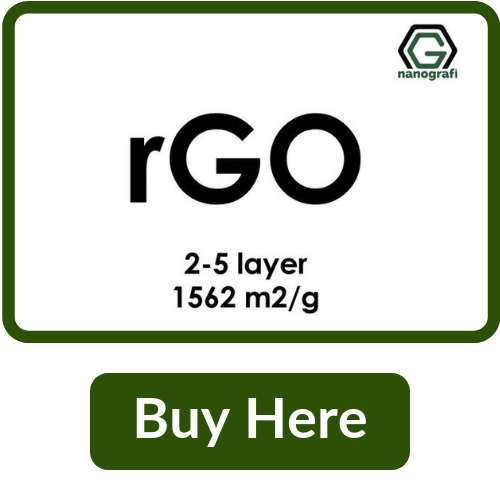Medical Applications of Nano Materials
The world of nanotechnology offers a wide range of applications in different sectors. This is particularly the case at the medical level. The performance of care, the possibilities of reconstruction and drug innovations suggest spectacular prospects. Today, nanomedicine is moving forward. The results and the promises are at the rendezvous. The application of nanotechnology in the medical field is in the process of revolutionizing the practice of medical care around the world. The main cause of this revolution is the size of the tools built, which allows them to apprehend, to diagnose and also to fight the disease. All this with new accuracy and efficiency. Therefore, in this article, we’ll study the medical applications of nanoscale materials in the medical field and the relevant aspects.
Disclaimer: The content of this post or any other linked material is intended for informational purposes only and should not be taken as medical advice.
The possibility of producing materials on a nanometric scale, with radically different properties (optical, electrical, magnetic, thermal, etc.) compared to materials on a macroscopic scale, has opened the doors to the development of new applications in fields as diverse as medicine, power, energy or electronics. In medicine, the use of nanometric or nanostructured materials has resulted in nanomedicine, which benefits from the unique properties of these materials to improve the diagnosis and treatment of diseases. An example of how the change in the fundamental properties of these materials allows developing new applications in biomedicine is the case of magnetic nanoparticles.
These materials, in addition to the specific properties due to their small size, have the advantage that their magnetic character makes it possible to use them for different functions, such as
i) Modifying the movement of particles for drug transport or magnetic separation;
ii) Produce heat for hyperthermia cancer treatment;
iii) Produce local magnetic field gradients and thus generate a contrast in magnetic resonance imaging, and
iv) Detect their presence by external means giving rise to applications such as biosensors.
For the use of nanomaterials in vivo, they must also meet a series of minimum requirements such as being stable at pH = 7 and in a physiological environment or not presenting toxicity or immune response in the body. For this reason, nanoparticles are usually coated with a material that improves their biocompatibility and improves their stability under physiological conditions. This coating, in turn, facilitates the possibility of joining different biological compounds (e.g. antibodies, drugs, etc.) for the specific needs of each application. As is logical to think, in the case of in vitro applications, the restrictions are not so large, allowing the use of other types of materials or particle sizes.
Read More on Blografi: Applications of Graphene in Medicine
Advantages of Nanoscale materials for medical applications
The use of nanomaterials for medical applications has many advantages, such as its ability to transport active compounds. On the one hand, its large surface area allows anchoring therapeutic molecules to its surface; and on the other hand, they can be used as containers to encapsulate different compounds, thus improving the solubility of poorly soluble compounds, protecting them from degradation processes or modifying their biodistribution. This can be very useful for the use of combination therapies, in which several compounds can be applied synchronously, both temporally and spatially. The nanoformulations also present the possibility of directing the compounds, in a more effective way, towards the area to be treated, thus allowing to reduce the necessary doses of active ingredient and thus reducing the side effects of the systemic distribution of the treatment, such as cancer therapies. You could also have multifunctional systems in which the same particle can be used to diagnose and treat the disease.
For all these advantages, the number of possible biomedical applications of these materials grows at high speed, especially because the same material can have multiple applications.
In our daily life, we have access to nanomaterials for applications in humans with examples as well known to the general public as liposomes in cosmetics or nanoparticles of titanium dioxide in sun creams. Other nanometric compounds have been used in clinical uses for years on a regular basis, as is the case of iron supplements for the treatment of iron deficiency anemia (for example Venofer® is composed of nanoparticles of iron oxides). However, despite the great potential of nanomaterials, their therapeutic use is relatively limited, with only a few examples approved by drug regulatory agencies. Specifically, there are approved formulations composed of liposomes (Doxil®, DaunoXone®), albumin nanoparticles (Abraxane®) and magnetic nanoparticles (Feridex®), among others. In addition to these, other nanomaterials with great potential include polymeric nanoparticles, gold or silica nanoparticles, and so-called quantum dots.
Types of nanoparticles used for the manufacture of drugs
The nanoparticles used herein are 0.1 or 0.2 microns in size and are prepared with biodegradable products. The systems thus obtained go deep enough into the tissues, cellular (and sub-cellular) compartments. Of course, we must use biopolymers that will be biodegraded, to avoid any toxicity problems that may arise by accumulation. There are two types of nanoparticulate systems that will allow the molecular addressing of drugs:
1.Reservoir systems or nanocapsules. Coming from synthetic chemistry, they will somehow transport the drug directly to the site of action.
2.Matrix systems are derived from synthetic chemistry. They form an entanglement of polymer chains and the drug will be dispersed in the molecular state in this polymer matrix. It is by degrading that this matrix will release the drug on the site of action.
Now let’s have a look at different applications of nanoscale materials in the medical sector.
Medical Applications of Nanoscale Materials
There are different applications of nanoparticles in biomedicine, classified into three main groups: improvement of imaging techniques, therapies using nanoparticles and sensors.
1.Molecular imaging with nanoparticles
First of all Irene Fernadez Barahona, Fernando Herranz, and Jesus Ruiz Cabello, researchers from the Spanish National Center for Cardiovascular Research briefly described the different techniques used for the acquisition of images for clinical diagnosis and provided some examples of the nanoparticles most commonly used today, such as liposomes and iron oxide nanoparticles. This section also includes an example of hybrid material that can be used for various imaging techniques, specifically for Positron Emission Tomography / Computerized Tomography (PET / CT) and Nuclear Magnetic Resonance Imaging (MRI).
2.Nanotherapies in the field of Biomedicine
Andrea Tabero of the Autonomous University of Madrid and Xian Weng-Jiang, Alejandra Martínez de Pinillos and Pilar Acedo, of University College London, presents a review on examples of therapies using nanoparticles. Although there is basic research for therapeutic applications with a multitude of nanomaterials, there are currently relatively few that are approved by regulatory agencies, but in the coming years, we’ll see a lot of progress in this regard.
3.Optical nanosensors
Susana de Marcos, Alba Martín, Jesús Navarro, Isabel Sanz, and Javier Galbán, researchers at the University of Zaragoza, describe examples of the use of nanoparticles in sensors. Being an ex vivo application, these types of methods do not have the limitations that affect the nanomaterials that require a thorough control of their toxicity.
Research in tissue repair, improvement of faculties, are among the tracks explored with the greatest seriousness and the prospect of results is unsuspected. Closer to home, nanotechnology gives researchers extra weapons to fight diseases, and of course cancers. Genomic research, bioinformatics, and rational drug design assisted by computer help create new therapeutic classes.
Read More on Blografi: Applications of Fullerenes in Medical Field
Current Research Lines
Until a few years ago, the design of nanoscale materials for nanomedicine has been relatively simple; however, at present, research is focusing on the development of more complex materials that optimize its clinical use. An example would be the design of materials that release active ingredients through the application of a stimulus, which allows controlling the administration of the compound of interest in the desired organ and at the necessary time. These materials could be activated by internal stimuli, such as changing their porosity with pH or degrading with the presence of specific enzymes of a specific tissue. They could also be activated by applying an “external” stimulus such as an alternating magnetic field or a specific wavelength light. Another example of material development would be the functionalization of nanoparticles with different biomolecules. The challenge here is the multitude of materials and biomolecules that can be joined, each combination having a different optimal joining method. Finally, hybrid materials that allow several functions at the same time are being investigated.
Despite the complexity inherent in this multidisciplinary field of research, it is possible to describe some general lines of evolution in the development of nanomedicine. On the one hand, it is very important to continue exploring the use of new materials, both synthetic or semi-synthetic that can provide new or better properties that allow optimizing their use in different applications. The process of obtaining the materials, whether new or existing, must, in turn, explore alternative manufacturing routes: developing processes whose scaling is easy and economically viable, and also using synthesis methods that generate the least amount of waste. We also need to produce nanomaterials with a correct structural organization.
In the face of a clinical application, it is necessary to better understand the interactions between nanomaterials and biological systems. It is necessary to know the possible transport of nanomaterials through biological barriers that could allow, for example, the treatment of ocular or neurodegenerative diseases, in which it is difficult for drugs to access the area to be treated. Also, we have to know better the health risks associated with nanomaterials. One of the problems we find today is the lack of standardization of the protocols for the study of nanomaterial toxicity during its preclinical evaluation, resulting in a great variability of results in toxicological studies.
All these future developments must always take place within the framework of the safety of the use of these materials both during their synthesis, their application, and their subsequent recycling or disposal. It is necessary to minimize the adverse impact of nanomaterials on the environment. Therefore, one of the future challenges is the generation of completely biodegradable materials for biomedical applications that could be excreted or metabolized by the body. Finally, it is essential to transfer the knowledge acquired in the development of new nanomaterials to the industry to facilitate its production and thus more easily achieve its clinical use.
Thus, nanoscale materials have greatly benefitted the medical sector due to their unique characteristics. Currently, nanoscale materials are used for a variety of medical applications, however, it is necessary to continue researching to develop new applications through the use of materials that already exist, such as the use of super adhesives for the treatment of vascular defects or the improvement of the techniques of diagnosis of tropical diseases.
Recent Posts
-
Advanced Materials for Unmanned Aerial Vehicle (UAV) Protection Against Laser
Consider a UAV on a critical mission, rendered inoperative by a sudden laser attack. With the increa …26th Jul 2024 -
Simulation and Modeling of Material Properties
Our world is composed of a dazzling array of materials, each with its own unique properties that dic …19th Jul 2024 -
Advanced Coatings for Superior Corrosion and Wear Resistance
Corrosion and wear pose significant challenges across various industries, leading to substantial eco …12th Jul 2024









